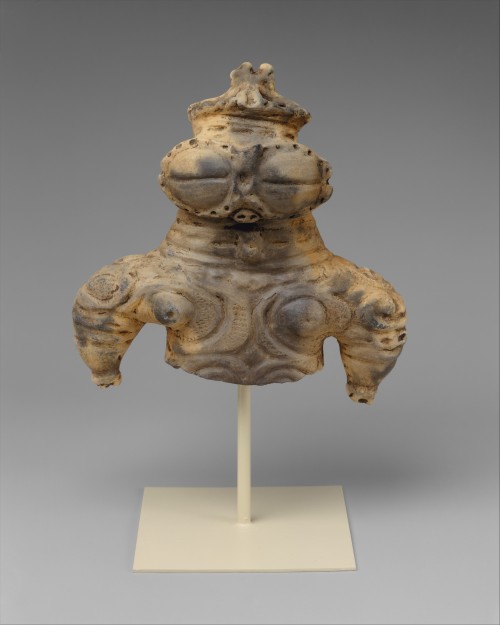A few pieces from prehistoric Japan.Japan is “a world apart – a cultural
A few pieces from prehistoric Japan.Japan is “a world apart – a cultural Galápagos where a unique civilisation blossomed”, to quote the Lonely Planet. The early history of this unique country is significant for so many reasons. It has a particularly rich, and long, historical record, and the value of its cultural achievements continues to endure. It is clear that modern humans have inhabited this archipelago for 30,000 years (in the very least), during what is termed the ‘Late Palaeolithic’. The subsequent ‘Jōmon period’ constitutes Japan’s Neolithic period (about 10,000 BC - 400 BCE). The period is named after the characteristic patterns made with twisted cords on the period’s pottery (Jōmon meaning ‘cord pattern’, refer to photo 2). Given the huge temporal expanse and regional variability of this period, generalisations are obviously difficult. Despite this, the Jōmon culture is perhaps best conceived of as “a large loosely integrated cultural complex” (as noted by Richard Pearson). The onset of this period was gradual. People seem to have hunted wild animals, eaten seafood, and had a developing awareness of agriculture. By around 5,000 BCE, people appeared to have generally settled in stable communities, living mostly in pit dwellings with roofs of thatch or earth and wood. Shown in this post are a few examples of archaeological objects from this famous period of Japan’s history. The heads of clay figures shown in photos 1 and 4 date to the Late Jōmon period (ca. 1500–1000 BCE). The vessel shown in the 2nd image is the oldest artefact here, dating to the Middle Jōmon period (ca. 3500–2500 BCE), while the 3rd image, showing a Dogū figurine, is the youngest (Final Jōmon period, ca. 1000–300 BCE).Shown artefacts are courtesy of The Metropolitan Museum of Art, New York. Via their online collections: 1975.268.189, 1975.268.183, 1975.268.191 & 1975.268.190. -- source link
Tumblr Blog : ancientart.tumblr.com
#history#archaeology#art history#long read#aquicklookat#japanese



